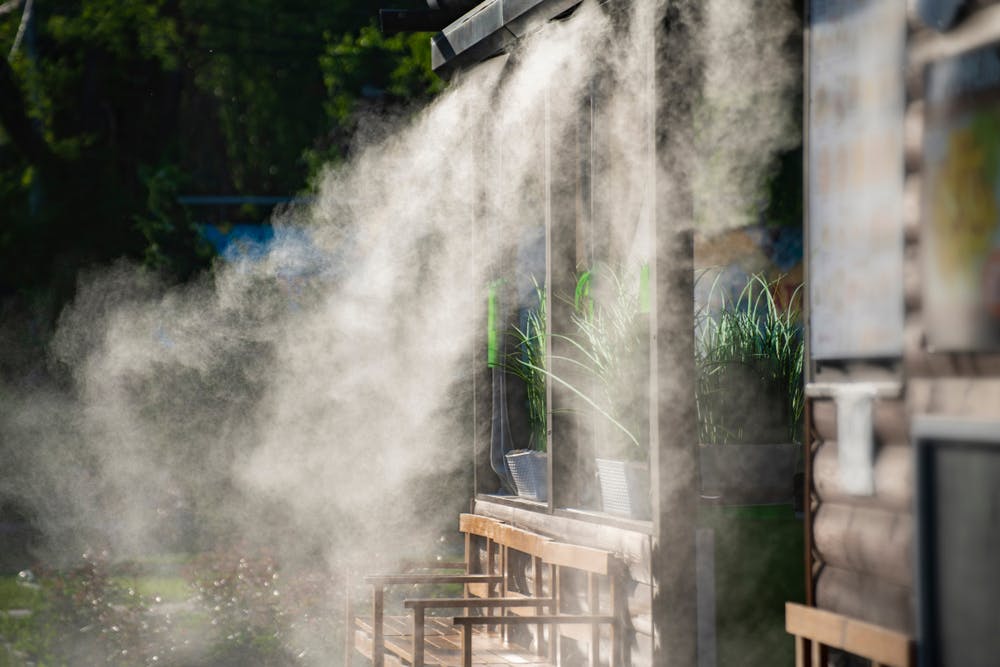All
11th August 2022
This is how major cities heatproof their infrastructure
During the UK’s unprecedented heatwave conditions, it has become more obvious than ever that our domestic and commercial infrastructure is designed for cooler climates, with certain features implemented to not only encourage heat, but retain it too.
IronmongeryDirect
11th August 2022
5 mins
While this has proved effective more often than not, as the UK’s climate changes, many have called for change to make sure our infrastructure can withstand extreme heat when it does come around. We’ve taken a look at some major cities around the world where higher temperatures have been common place for a number of years, and the steps they have taken to protect their infrastructure, as well as their citizens.
According to an article published by The Guardian¹, cities and urban areas can be up to 10 degrees Celsius hotter than the surrounding countryside. This is caused by a number of factors, including air conditioning units expelling the heat used to run them out in to the air, causing outside temperatures to increase, as well as using construction materials that absorb heat, including concrete and asphalt.
However, many well known cities around the world have led the global cooling effort by implementing certain features to their infrastructure, with positive results, so how are they doing it?
New York City’s CoolRoofs initiative
It is well known that dark objects absorb heat, and a darker colour palette features heavily in many urban landscapes, resulting in buildings and infrastructure such as roofs and paving reach scorching temperatures of up to 90 degrees Celsius. Having the exteriors of these buildings reach such extreme temperatures will have a knock on effect on the inside, leading to health issues for the occupants.
However, steps can be taken to combat this, and this knowledge is what lead to the CoolRoofs initiative in New York City.
The goal of this initiative is to both cool down the city’s buildings, as well as tackling the extremely prevalent issue of carbon emissions. The initiative involves covering the city’s rooftops with a white reflective coating, and providing training and work experience to a number of citizens to ensure there are enough workers to carry out the work.
This reflective coating has a number of benefits, including reducing the temperature of the buildings both externally and internally, with internal temperatures being reduced by up to 30%. As well as improving air quality and extending the lifespan of the rooftops themselves and HVAC units, according to the City of New York’s website²: “Every 2,500 square feet of roof that is coated can reduce the city's carbon footprint by 1 ton of CO2.”.

Europe’s robust railways
It is often the case that when the UK’s temperatures rise above what is considered normal, transport infrastructure tends to suffer and causes major issues and disruption. When these issues occur, many of us wonder why transport systems all over the world with climates that experience extreme heat a lot more frequently, can still function.
The answer can be found within the manufacturing process, both before and during. The steel used in European rail lines is made using different alloys and different fabricating methods, resulting in a transport system that can release heat stress and tolerate heat more effectively than their UK counterparts.

Water spray solutions
Whenever extreme temperatures occur in any part of the world, we are all told to stay hydrated as one of the main ways to prevent heat related illnesses, but water and moisture can be used for much more than this.
Many European countries are utilising water in innovative ways to cool down infrastructure and the environment in general. A popular water based method of cooling is using strips of vaporisers or misters along streets in urban areas, which is said to decrease overall air temperature by 1.5 degrees Celsius. These systems have proven to be effective all over the world, from Austria to China.
As well as this, the French city of Nice has implemented pavement wetting systems, to reduce the common issue of searing hot urban pavements. This system works with a combination of over ground spray, and porous pavement slabs that absorb both the water from the spray and the moisture from underneath the slabs, resulting in a cool and comfortable pavement.

When and if it is decided that the UK so should undergo a heatproofing transformation, they may look to these cities and methods to create a system that means residents of the UK and its infrastructure can be protected against our warming climate.
References:
https://www.theguardian.com/cities/2018/aug/15/what-heat-proof-city-look-like
https://www1.nyc.gov/nycbusiness/article/nyc-coolroofs
